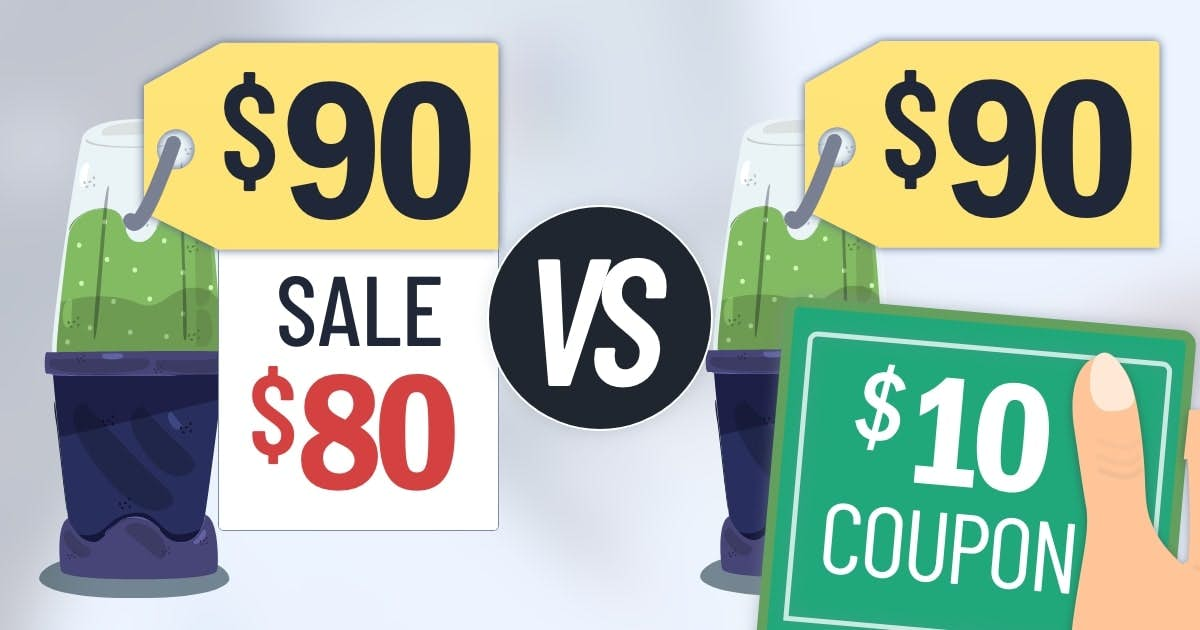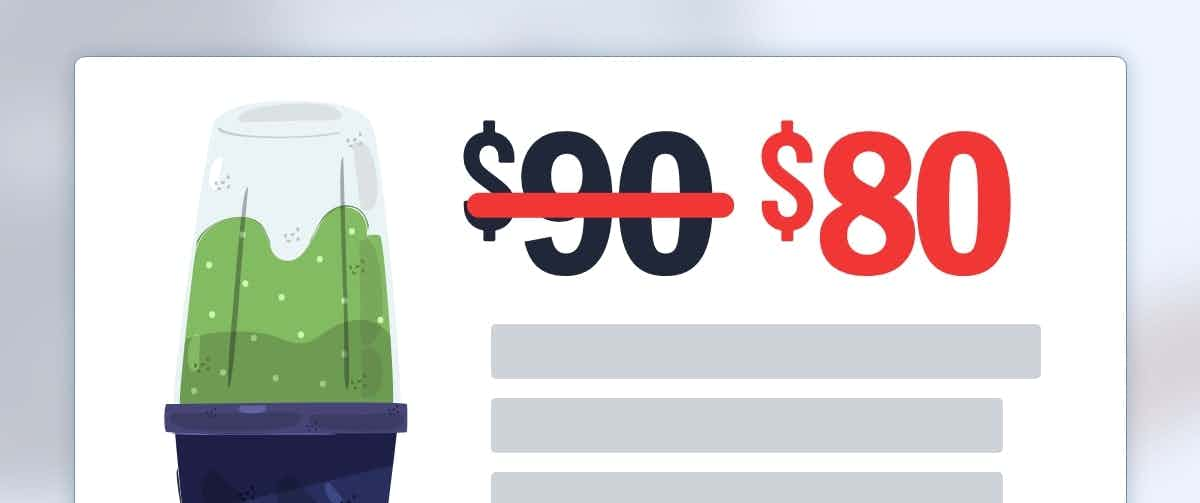Separate Your Discounts When Possible
A new study shows that customers prefer larger purchases when they don't see the final price from a known discount.

Overview
Consider a $10 discount.
Marketers could show a discounted price:

Or they could supply coupons. In this case, customers would see current prices until they apply this discount in the checkout:

Would it matter? It’s still a $10 discount either way.
Turns out, yes – it matters.
In a new study, customers preferred larger purchases when they received a separate discount (e.g., coupon code; Jia, Huang, Zhang, Shi, & Zhang, 2023).
Why? Because they felt satisfaction imagining the price reduction.
For discounts that were visibly shown, prices were already reduced. Customers had no wiggle room in price, so they preferred cheaper options.
It's called final price neglect. When customers possess their own discount, they browse products by fixating on the price reduction (rather than the final price). It feels good. And this numbs the pain of larger purchases.
Takeaways:
- Give Tangible Discounts. All else equal, coupons might be more effective than visibly reduced prices for the same amount.
- Delay Showing Discounted Prices. Usually marketers want to show the lowest price possible. But stay patient. Even if you can activate a 15% discount before the purchase, you should wait until the checkout if customers are aware of the discount. Let them envision this price flexibility while browsing. It cushions their pain.
- Be Cognizant. Next time you possess a coupon, notice your emotions while envisioning these reductions. Don't let these emotions distract you from the final price.
Other New Stuff
- Customers Prefer Products Made By Women - Men don't show a preference, but women prefer to buy female-made products to support other women. And this tips the balance (Schnurr & Halkias, 2022).
- Female CMOs Make Less Risky Decisions - Female CMOs are more risk averse (e.g., they launch fewer products) under male CEOs because they fear scrutiny. But this effect reverses under female CEOs, perhaps because it inspires confidence and freedom (Varma, Bommaraju, & Singh, 2023).
- Bad Medical News? You Prefer Brand Name Drugs - Patients are 8% more likely to choose branded medication because they think it's superior to generic medication, even though the ingredients are identical (Hermosilla & Ching, 2023).